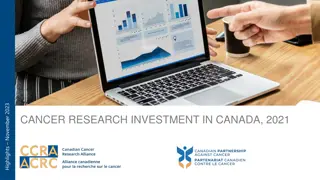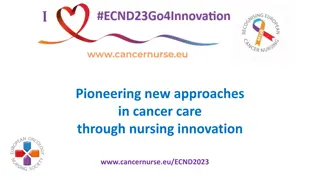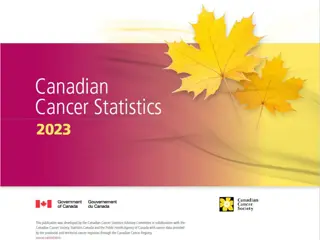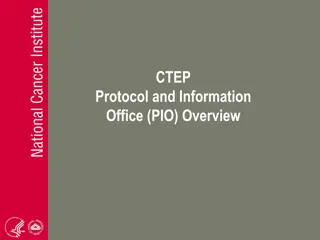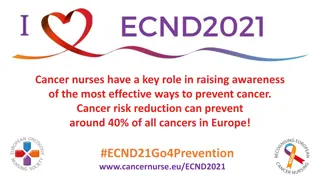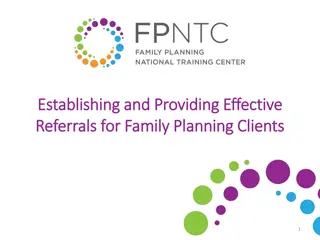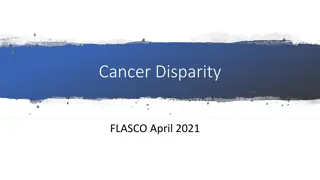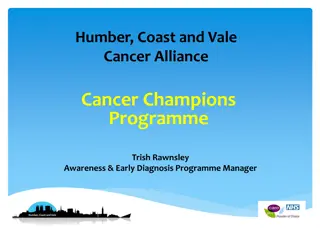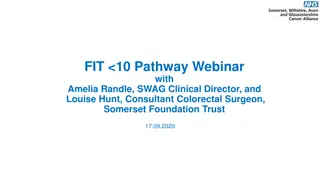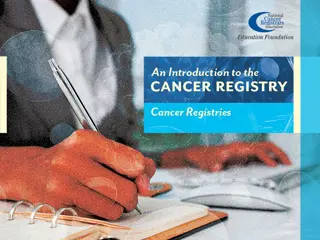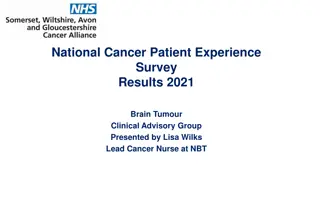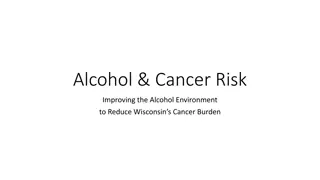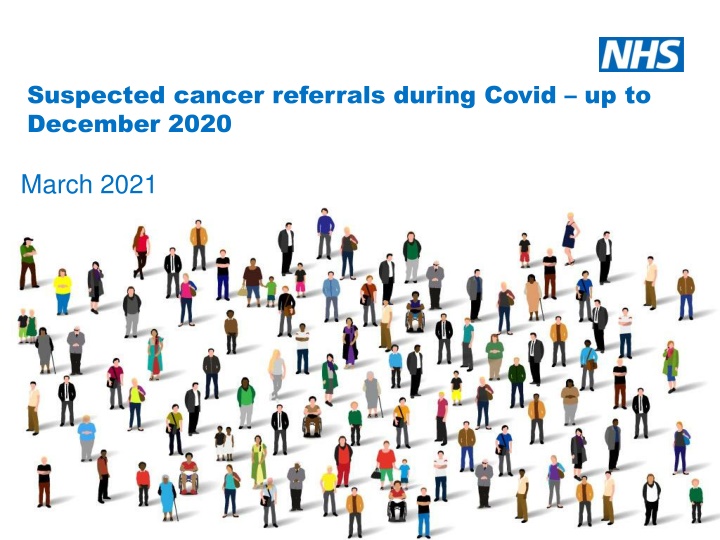
Suspected Cancer Referrals Trends in London - Insights from 2020-2021
Explore the impact of Covid on suspected cancer referrals in London from April 2020 to December 2021. Discover trends by tumour types, deprivation quintiles, age groups, and sex, highlighting disparities and recovery rates. Insights from Cancer Alliance Data, Evidence, and Analysis Service.
Download Presentation

Please find below an Image/Link to download the presentation.
The content on the website is provided AS IS for your information and personal use only. It may not be sold, licensed, or shared on other websites without obtaining consent from the author. If you encounter any issues during the download, it is possible that the publisher has removed the file from their server.
You are allowed to download the files provided on this website for personal or commercial use, subject to the condition that they are used lawfully. All files are the property of their respective owners.
The content on the website is provided AS IS for your information and personal use only. It may not be sold, licensed, or shared on other websites without obtaining consent from the author.
E N D
Presentation Transcript
Suspected cancer referrals during Covid up to December 2020 March 2021
Background The Cancer Alliance Data, Evidence and Analysis Service (CADEAS) have produced a useful tool to review the characteristics of suspected cancer referrals and first treatments for cancer since April 2020 which is used in these slides. (CADEAS (ncin.org.uk)) This only covers inequalities at referral and not inequalities further down the pathway. This pack compares the referrals in period April-December 2020 to the same months in 2019 This covers deprivation, age, sex and ethnicity. These slides summarise the main findings at London level 2
Suspected Cancer Referrals by tumour type - London Figure 2. Percentage of baseline levels of referrals by tumour group All other Breast Gynaecological Head and neck Lower GI Lung Skin Upper GI Urological (excl. testicular) 140% 120% 100% 80% 60% 40% 20% 0% January February March April May June July August September October November December Lung referrals, Lower GI referrals and Urology referrals have been most effected by the pandemic 3
Suspected Cancer Referrals by Deprivation Quintile - London Figure 3. Percentage of baseline levels of referrals by deprivation Tumour Group: (All) Quintile 1 (least deprived) Quintile 2 Quintile 3 Quintile 4 Quintile 5 (most deprived) 140% 120% 100% 80% 60% 40% 20% 0% January February March April May June July August September October November December In London there is no significant difference in recovery of referrals between deprivation quintiles In England there is a 3% difference between most deprived (81%) and least deprived(84%). 4
Suspected Cancer Referrals by Age - London Figure 3. Percentage of baseline levels of referrals by age Tumour Group: (All) 0-49 50-59 60-69 70-79 80+ 140% 120% 100% 80% 60% 40% 20% 0% January February March April May June July August September October November December Overall there has been a clear difference in recovery by age, with a 13% difference between the youngest group (84%) and the oldest group (71%) 5
Suspected Cancer Referrals by Sex - London Figure 7. Percentage of baseline levels of referrals from March by sex. Tumour Site: (All) Overall there is a 5% difference in recovery between male and female. Low levels of urology referrals will account for some this difference. It is important to note the longer term issue this analysis has highlighted, with twice as many two week referrals for females as for males in London (and also across England). This compares with incidence of cancer of 50:50 male to female. Although high volumes and breast and gynae referrals partially explains this. Higher volumes of referrals for females are seen in cancers where incidence is higher in males (Upper GI, Colorectal, Skin, Head and Neck) 100% 90% 80% 70% 60% 50% Female Male Figure 4. Proportion of referrals by sex Tumour Group: (All) Female Male 0.0% 10.0% 20.0% Tumour type Referrals (Male:Female) 40%:60% 47%:53% 40%:60% 39%:61% Incidence (Male:Female) 59%:41% 55%:45% 55%:45% 67%:33% 30.0% 64.6% 67.0% 40.0% 50.0% Upper GI Colorectal Skin Head and Neck 60.0% 70.0% 80.0% 35.4% 33.0% 90.0% 100.0% December 2019 December 2020 6
Suspected cancer referrals by ethnicity in London - Overall Figure 3. Percentage of baseline levels of referrals by ethnicity Tumour Group: (All) Asian Black Mixed / Multiple Other Unknown White Non-British White British 140% 120% 100% 80% 60% 40% 20% 0% January February March April May June July August September October November December - When compared to baseline, referral volumes overall were statistically significantly lower in the Asian group and the white non-British group than the white British group. Breast Asian and white non-British group are lower than white British group Lower GI - Asian group is lower than white British group Upper GI Black and Asian groups were higher than white British group Urology Black group is lower than white British group - - - - 7
Annex: Help Us, Help You Accessing NHS Services campaign Phase one: General Cancer Symptoms: 9 Oct 1 Nov 2020 backgrounds, focusing on general cancer symptoms. A 30 TV ad targeted to 50+ people from lower socio economic Phase two: Abdominal Cancer Symptoms: 9 Nov 17 Jan 2021 backgrounds (including BAME and regional targeting). A 30 TV ad, targeted to 50+ people from lower socio economic social, digital, tactical out of home, regional print, search, partnership activity). The ad will be shown in a range of media (e.g. video on demand, Phase three: Lung Cancer: From 15 Feb 2021 late May 2021 that has seen the biggest drop off in urgent referrals. The final campaign focuses on lung messaging, which is the pathway 8


